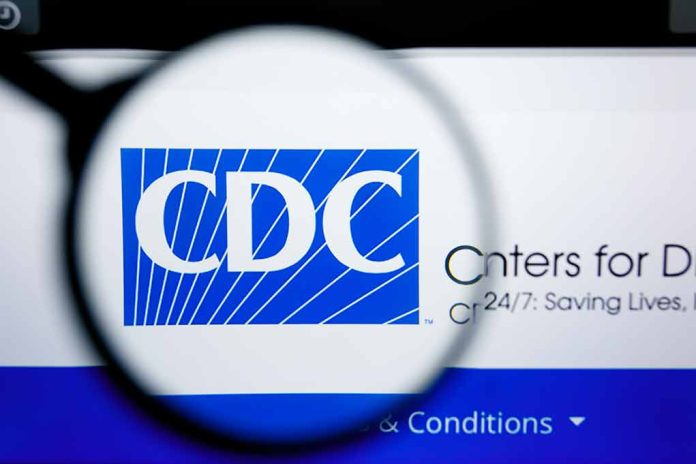
Amidst a wave of resignations and strategic shifts, the Centers for Disease Control and Prevention (CDC) enters a pivotal phase that could redefine its role in safeguarding national health.
Key Takeaways
- Five senior CDC officials have resigned, heightening leadership changes within a year.
- Susan Monarez is nominated as the new CDC director, adding to the intrigue of these shifts.
- Leadership gaps in critical CDC departments could impact national public health strategies.
- The Trump administration’s proposal for CDC workforce reduction stirs concerns.
A Leadership Exodus
The recent exodus of five high-level officials from the CDC has sparked conversations about the stability and future direction of the nation’s leading public health organization. This follows the unexpected departures of Kevin Griffis, Robin Bailey, and Dr. Nirav Shah, collectively leaving a significant leadership vacuum. Key roles affected include those responsible for overseeing Public Health Infrastructure, Science, and Health Equity, which are pivotal for steering public health initiatives.
This upheaval coincides with the nomination of Susan Monarez as the next CDC director. However, it remains unclear if her appointment directly influenced these resignations. The leadership changes could be driven by broader systemic issues, as reflected by the recent decision of the Trump administration to withdraw Dr. David Weldon’s nomination for CDC director, further complicating matters.
Budgetary Constraints and Workforce Reduction
The CDC, with a core budget exceeding $9 billion and a workforce of over 13,000, now grapples with uncertainties exacerbated by leadership vacancies. Adding to this turbulence are proposals from the Trump administration to reduce the workforce at the CDC and other federal health agencies. These proposals have raised alarms about potential program cuts and employee layoffs, which could hinder the agency’s capacity to manage current and future health crises effectively.
The CDC recently extended an invitation to approximately 200 former employees to return after a 10% workforce reduction. Still, the shadow of job insecurity looms, causing discomfort among staff and stakeholders alike. Federal judges have intervened, ordering the reinstatement of 550 probationary employees laid off earlier this year, highlighting the ongoing legal and administrative challenges faced by the agency.
Brewing at the CDC: Five top resignations and ‘potentially catastrophic’ cuts https://t.co/UAKaZ7I3CI
— Atlanta Journal-Constitution (@ajc) March 26, 2025
Looking Forward
With the nation’s health systems heavily reliant on the CDC’s efficiency and expertise, bridging this leadership gap is crucial. New director Susan Monarez’s vision includes enhancing data, communication, and response capabilities at the CDC. Her leadership comes at a time when the agency must navigate challenges like increasing measles cases and ongoing vaccine-related controversies amid an uncertain future.
The continuity of effective public health strategies amid such upheaval demands not only filling leadership voids swiftly but also reinforcing the agency’s underpinning frameworks to withstand future crises. Stakeholders are intently watching as Monarez’s confirmation hearings approach, anticipating insights into how these challenges and transitions will shape the CDC under her stewardship.
Sources:
- 5 high-level CDC officials are leaving in the latest turmoil for the public health agency
- Five Key CDC Leaders Abruptly Retire Amid Agency Shakeup: What to Know – Newsweek



